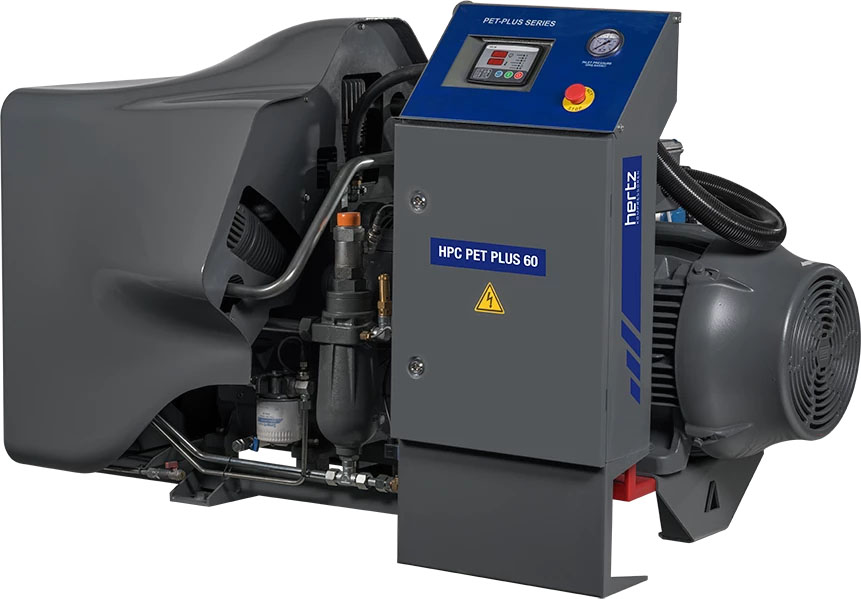When most people think of an air compressor, the reciprocating or piston compressor comes to mind. The reciprocating air compressor is often among the most expensive and crucial systems in production facilities. You’ll find these compressors in many commercial or industrial settings, such as automotive garages, home workshops, petrochemical plants, and gas transmission pipelines, among others. But mostly in areas where the demand for air isn’t continuous or too high.
How Reciprocating Air Compressors Work
A reciprocating air compressor uses pistons to compress and deliver gas or air at high pressures. These machines are simple units and often mounted on a small receiver tank. Reciprocating compressors typically run in a start and stop mode – automatically running when the pressure drops below a set point and stopping whenever it reaches a specified maximum.
You can almost always tell when a reciprocating compressor is running because of the pistons’ loud noise. These units also get quite hot and use a simple cooling system, usually consisting of fins, and a pulley mounted fan.
Furthermore, the air produced by reciprocating compressors is typical super-hot and oily – making these units challenging to clean and dry without some additional filtering and cooling system.
Benefits of Using a Reciprocating Air Compressor
- High pressure and power – Reciprocating compressors come in single-stage or two-stage compression. Machines with two-stages of compression have greater efficiency and can reach very high pressures. For example, some air tanks are rated 4500psi, which these units can satisfy without a problem. In some cases, reciprocating compressors can outperform rotary screw compressors in terms of air pressure.
- Lower initial cost – Reciprocating air compressors typically cost less than other kinds of units, though long-term expenses will vary depending on how the system is used. Energy usage makes up around 70-75% of a compressor’s lifetime operating costs.
- Relatively low maintenance cost – While reciprocating compressors often require more routine maintenance, it depends on how people use these units. The parts for these machines are less expensive and complicated than other compressor types, so maintenance costs can be relatively low.
- Durable – With regular maintenance, you can expect your reciprocating air compressor to last for 10 to 15 years, in good operating condition.
Final Thoughts
“It’s common for facilities to outgrow piston compressors as airflow demand increases. These units aren’t built to operate continuously without rest” – Hertz Kompressoren, a leading air compressor producer.
Companies typically start with a limited need for compressed air, but the production requirements often increase as time passes. So you may need something that has an increased duty cycle or can supply consistent airflow without breaks, such as a rotary screw air compressor. That can set you up for the future, ensuring your business will always handle the demand.
Additionally, a reciprocating air compressor can operate at full load, even though it’s not designed to do so, but with less energy efficiency. These units consume more power per unit at full load than a rotary screw air compressor.
Lastly, use caution. Going over 60 percent of a reciprocating air compressor’s capacity can lead to overheating, which may cause damage to internal components. Therefore, these units are better suited for organizations with low air requirements.



